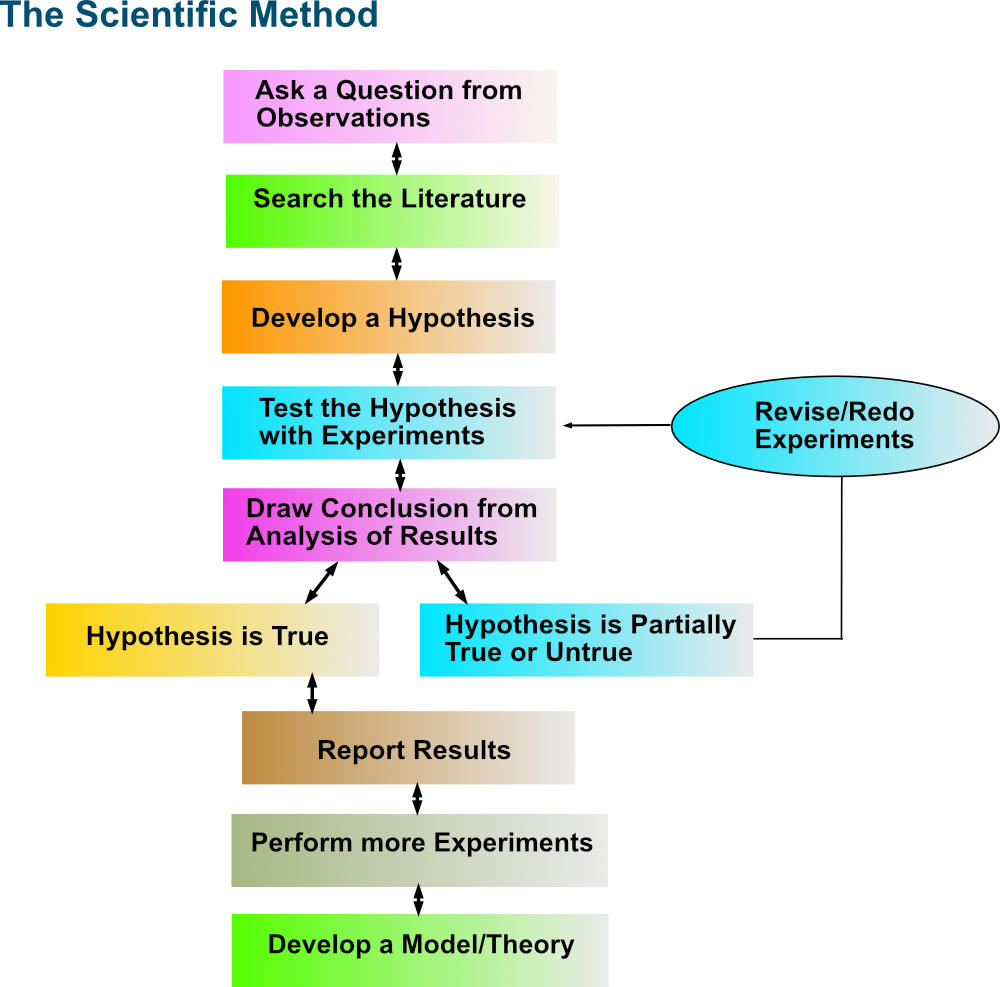It is important we understand the scientific approach used to make new discoveries. One approach to research is the Scientific Method. All of the material you will learn during this semester is based on observation, experimental data, laws, and theories.
The Scientific Method is a repetitive process that involves the formation of questions from observations, carefully formulated experiments, and a full analysis of experimental results. The main elements of the Scientific Method are outlined in the figure below.
Observations are a recording of natural phenomena. They may be quantitative (involve measurements) or qualitative (descriptive).
A hypothesis is a tentative explanation of our observations. The hypotheses allows us to design experiments to answer our questions about natural phenomena. A good hypothesis can aid us in making predictions about other experiments. Once a hypothesis is repeatedly effective in predicting experimental results, it is called a theory.
A theory provides an explanation of the causes of phenomena. It has the evidence and facts to support it. Keep in mind, a theory can be modified at any time. A theory is not proven and can be modified as instrumentation methods and data analysis improve.
Worksheet: The Scientific Method

